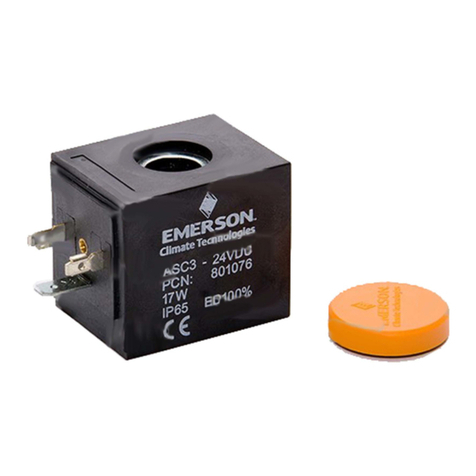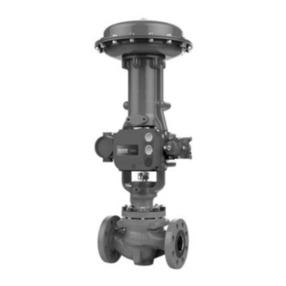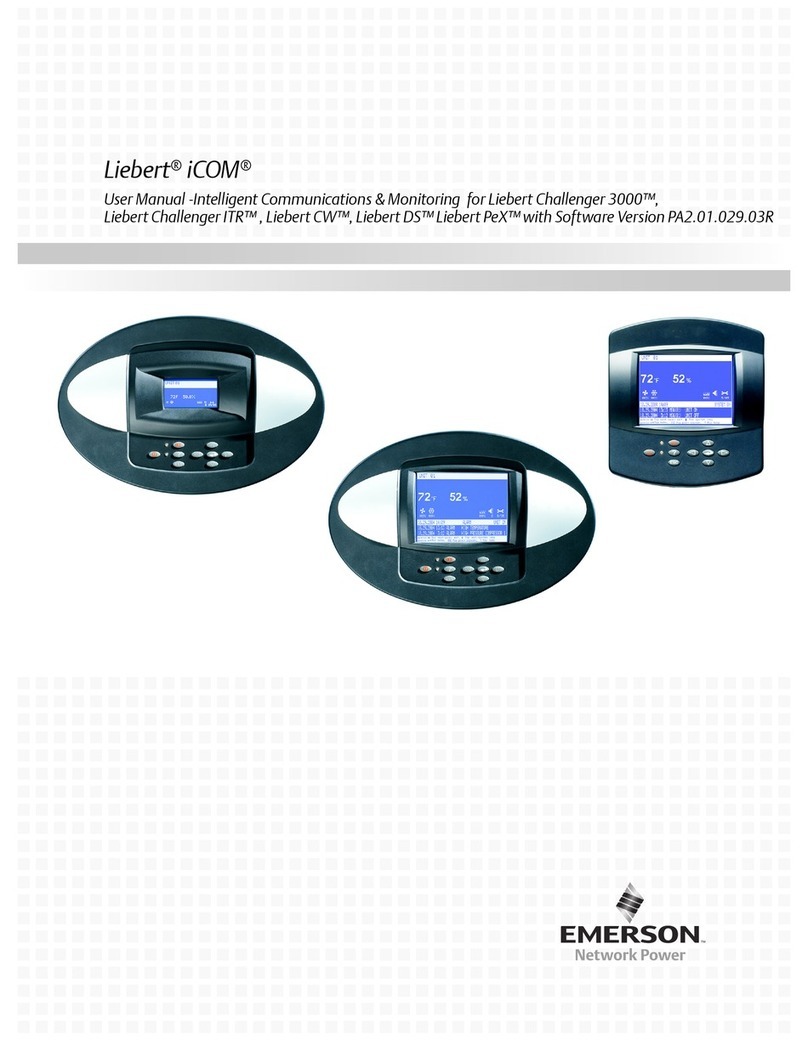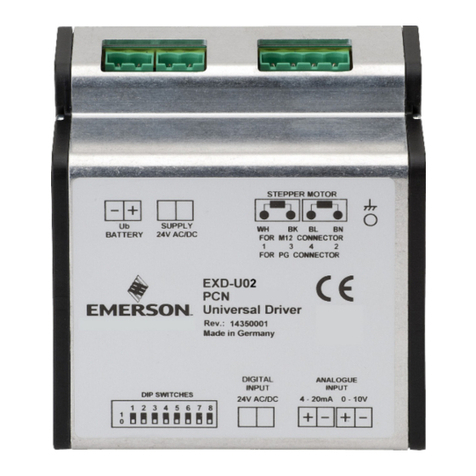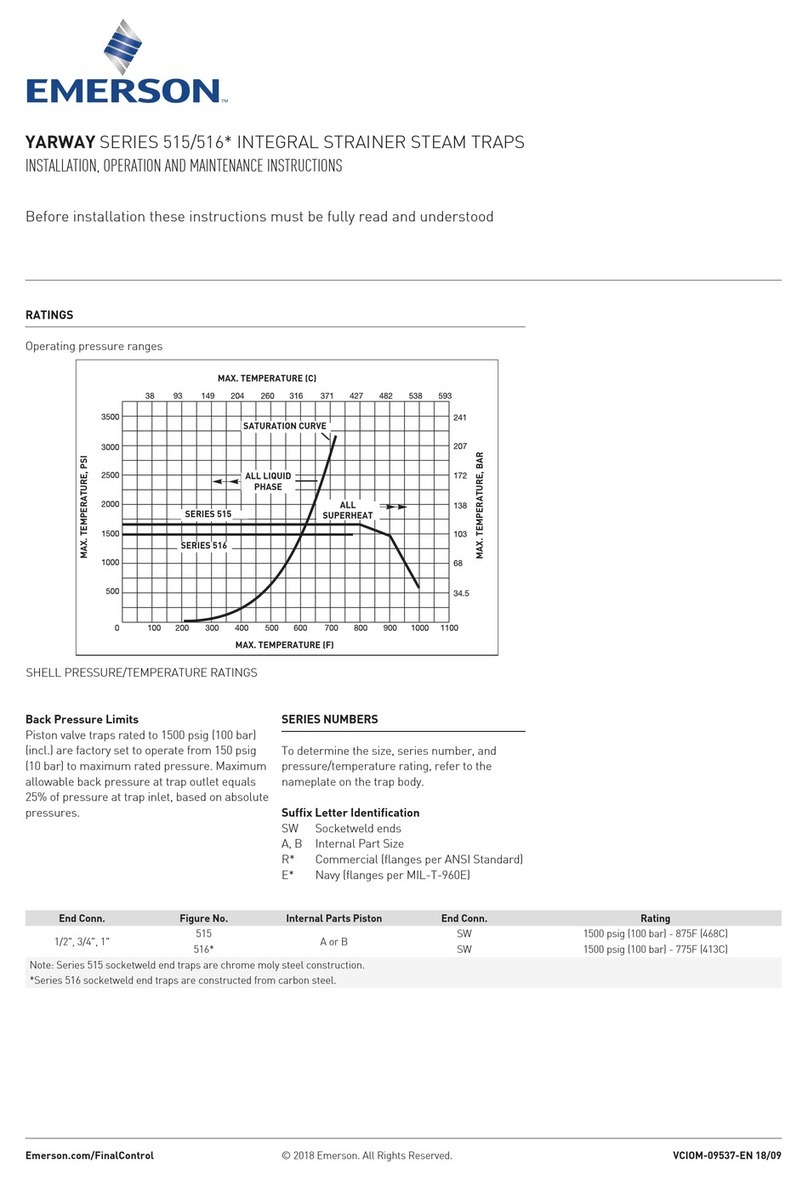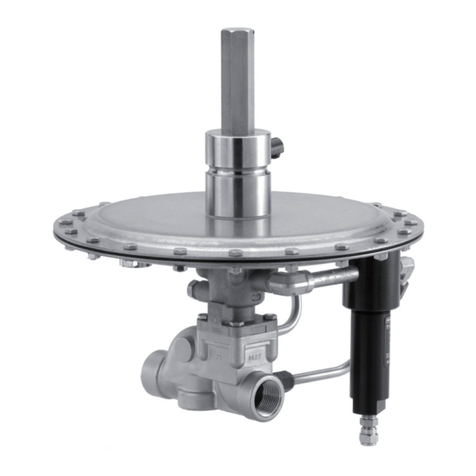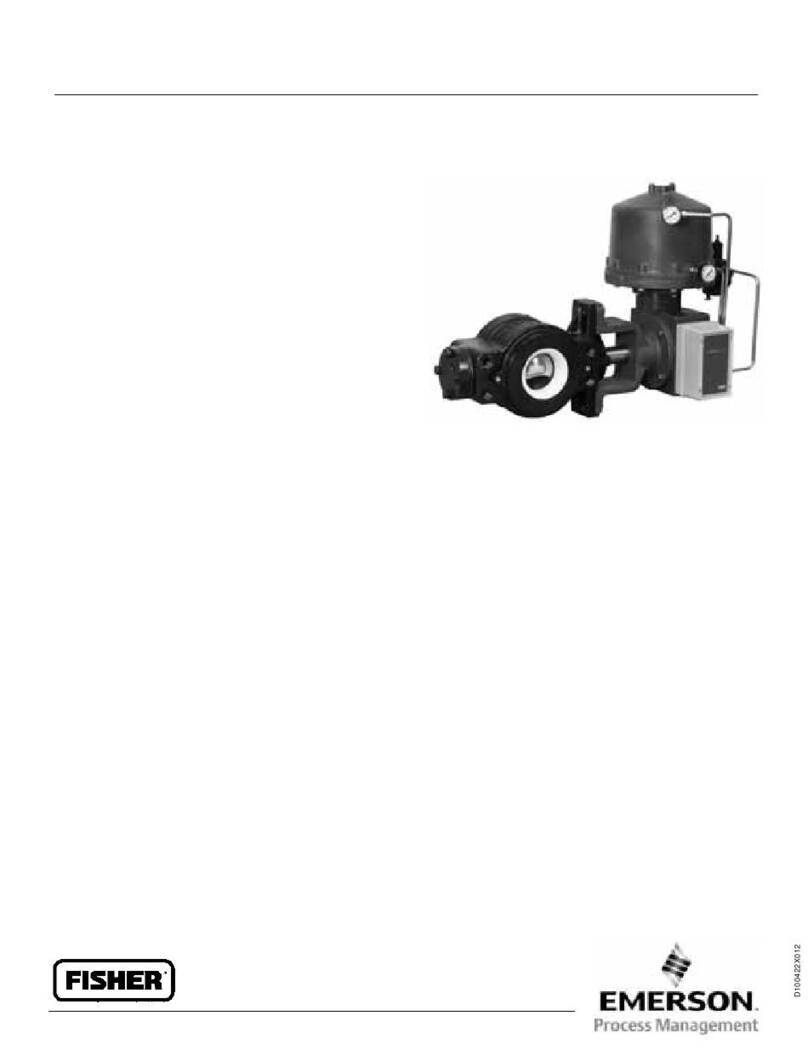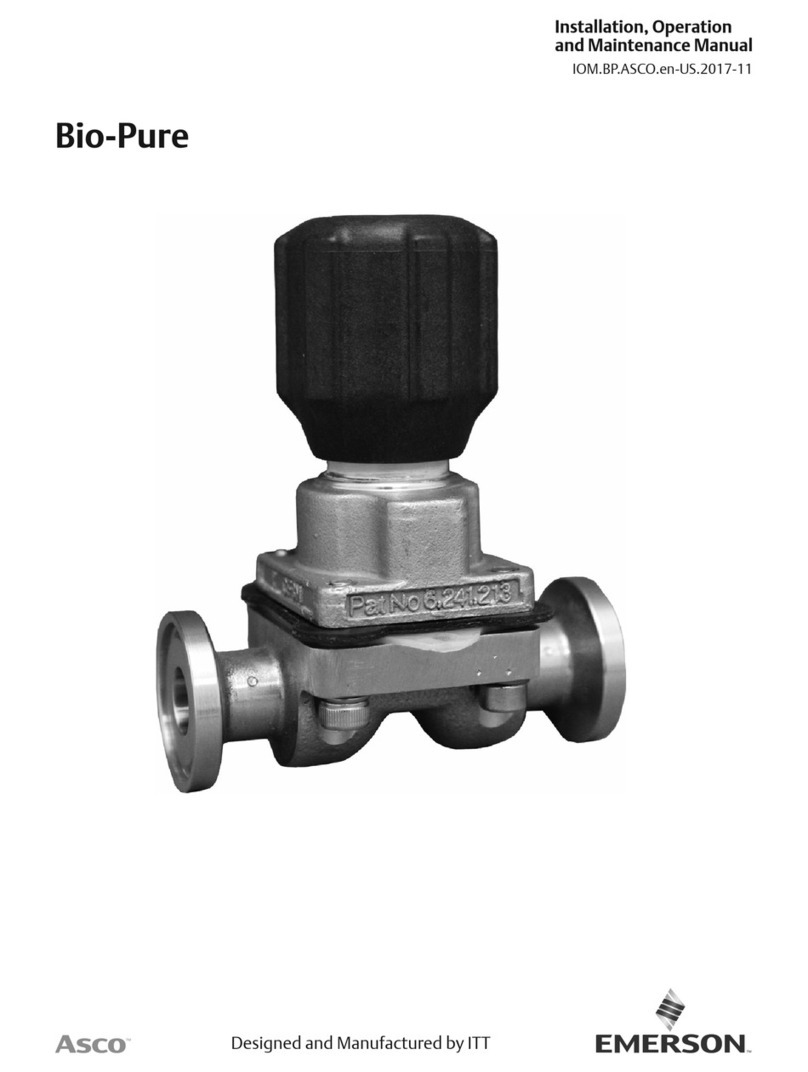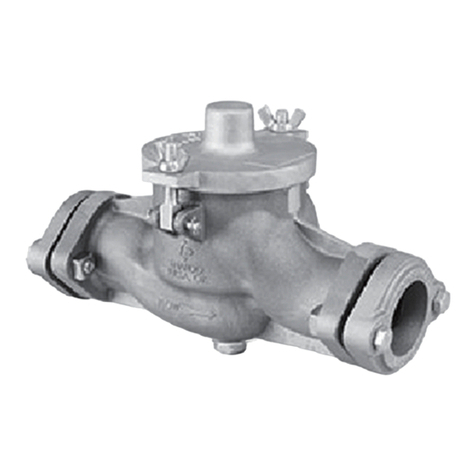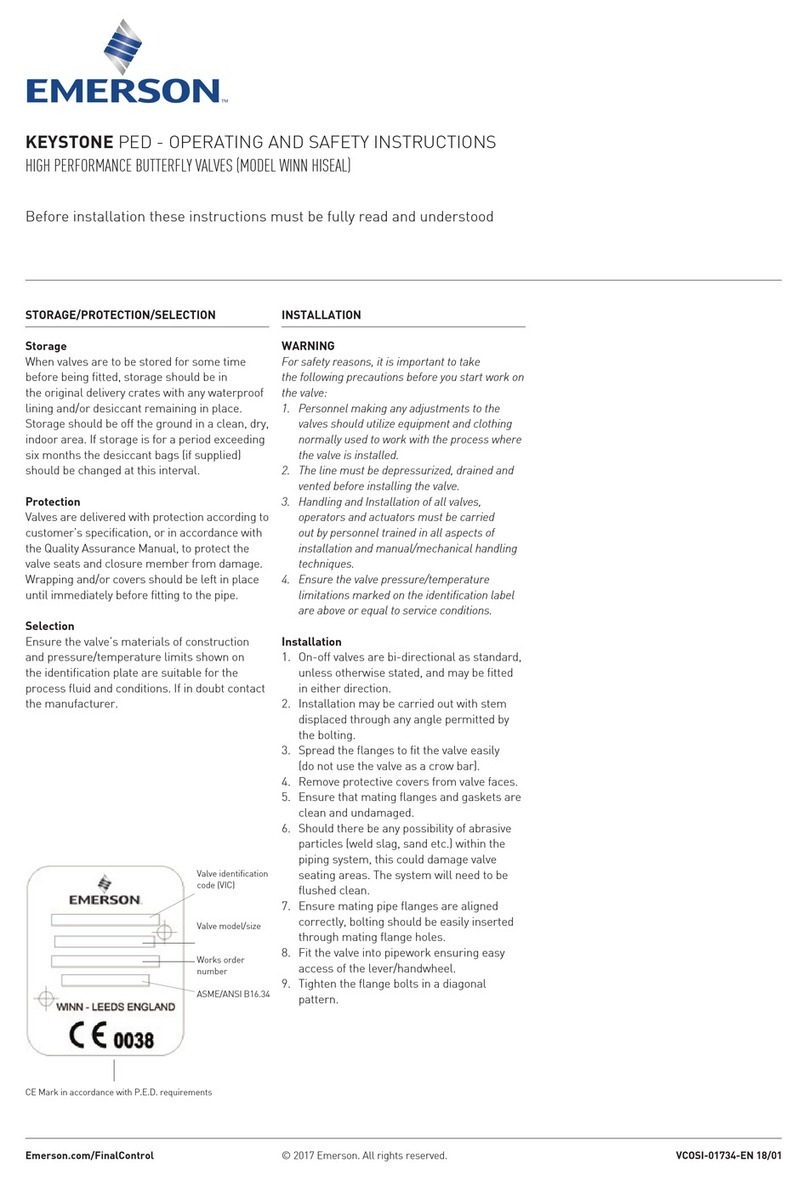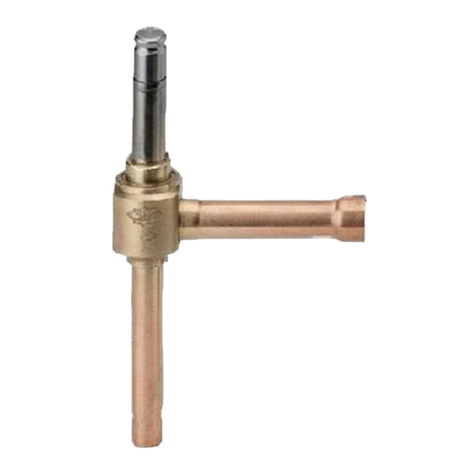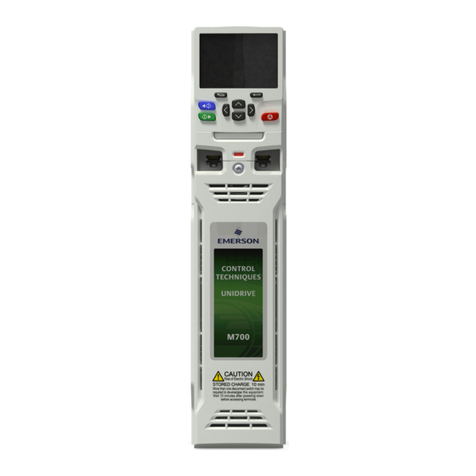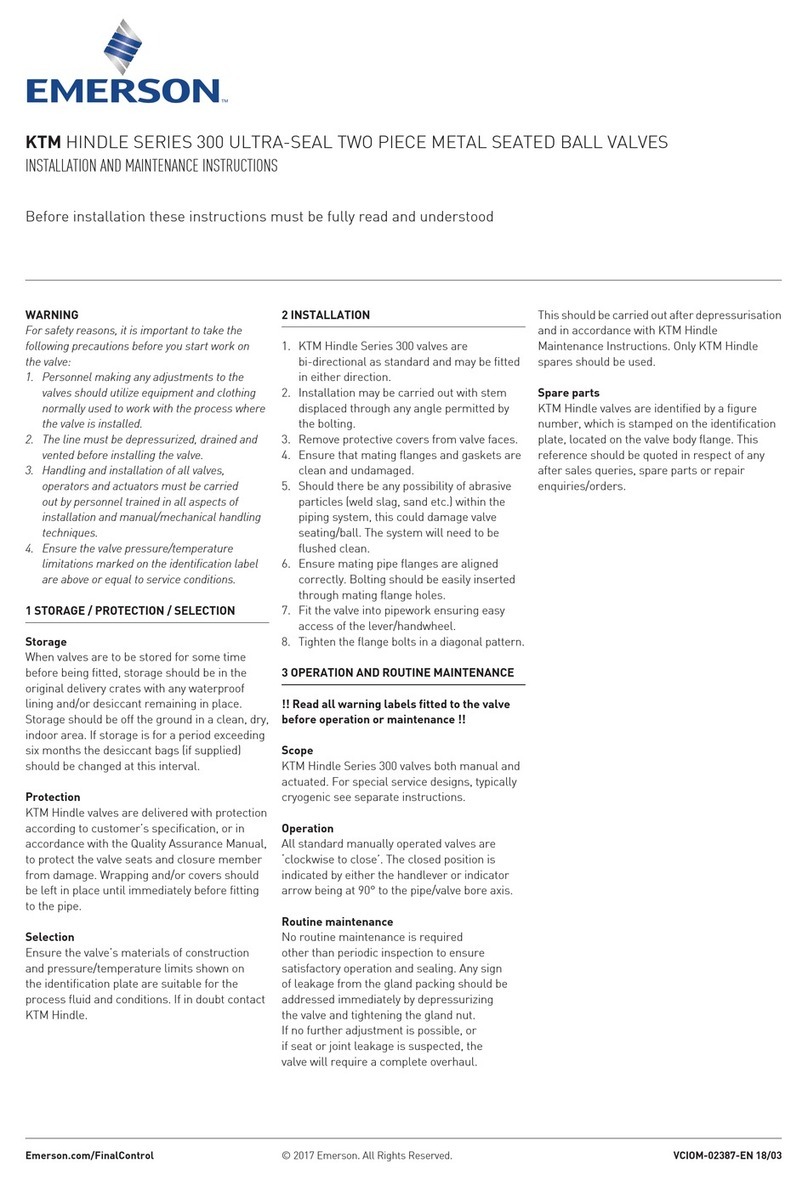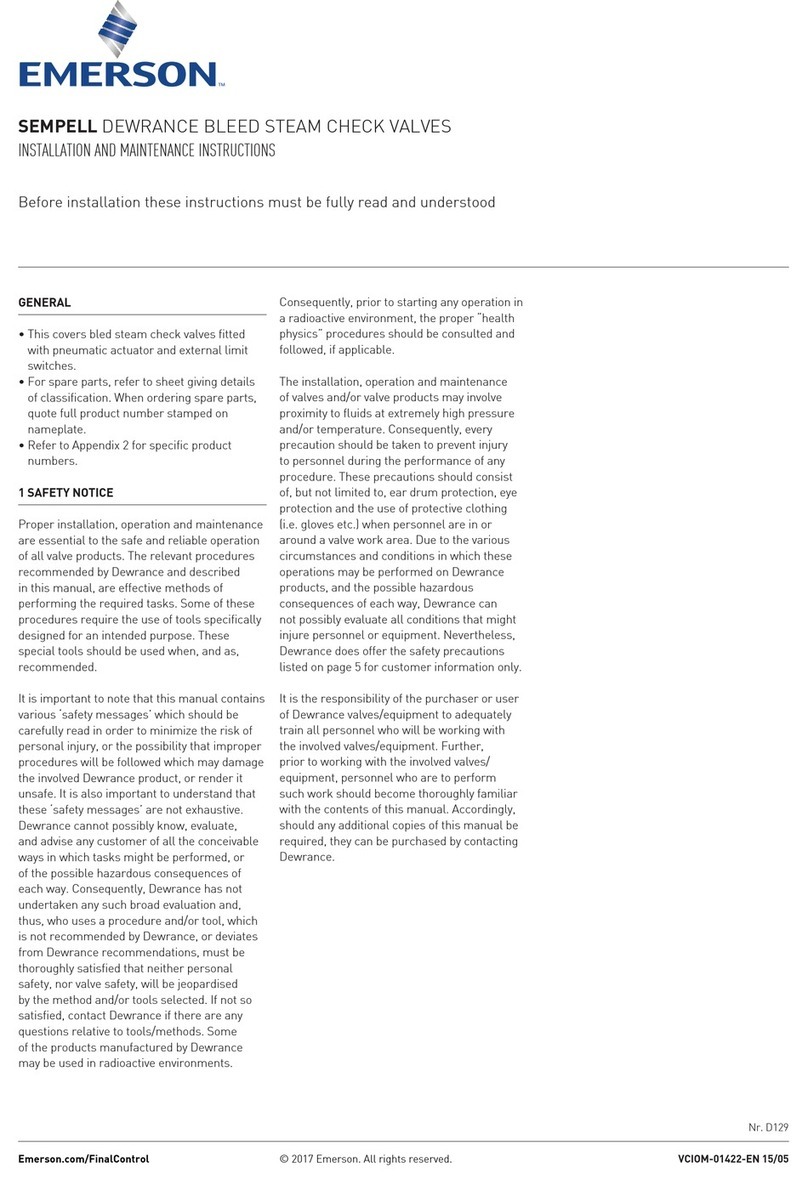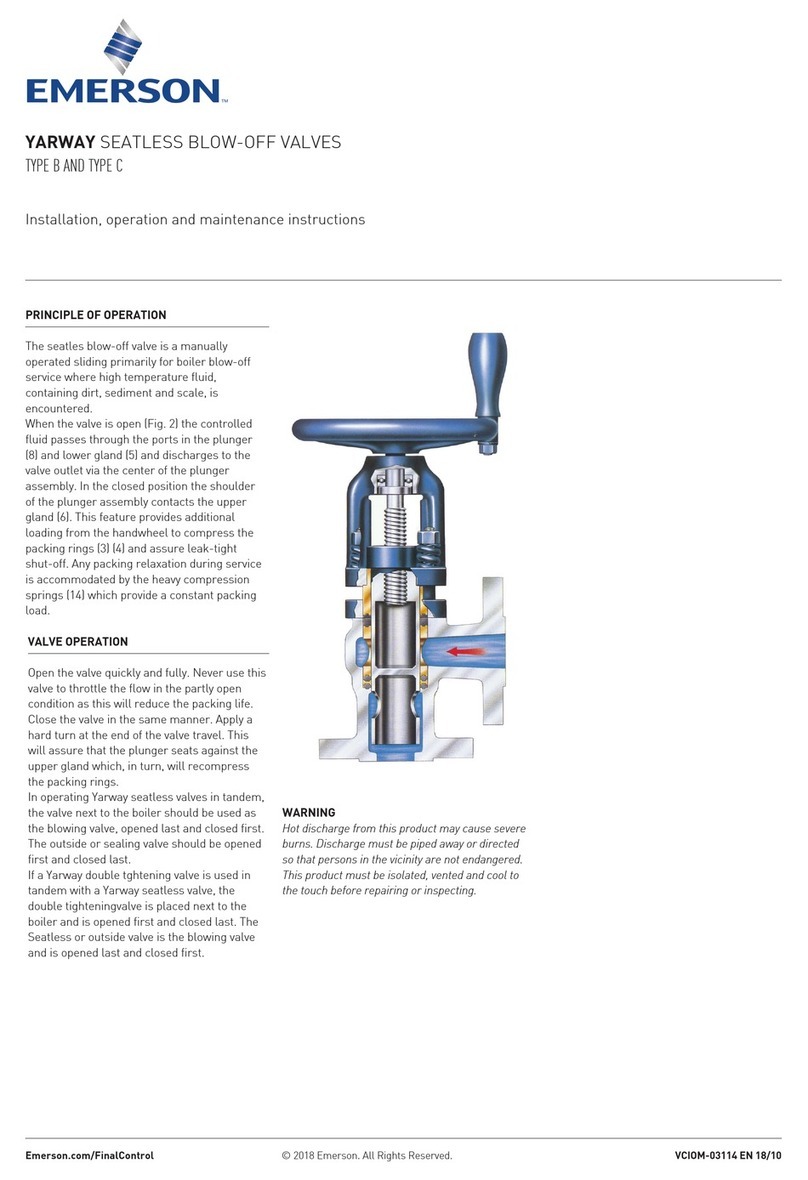
7
K4 - 6 .008 - .012 (.203 -.305)
K25 - 6 .010 - .012 (.254 -.305)
M5 - 6 .010 - .012 (.254 -.305)
M25 - 6 .010 - .012 (.254 -.305)
P25 - 6 .010 - .012 (.254 -.305)
CROSBY SERIES HE ISOFLEX®SELF-ACTUATED SAFETY VALVES
INSTALLATION, MAINTENANCE AND ADJUSTMENT INSTRUCTIONS
5 DESCRIPTION OF OPERATION
The operation of the Crosby Series HE safety
valve is as follows:
When the pressure in the valve inlet reaches
the set point, the valve will open with a sharp
pop with very little simmer or warn.
Full relieving capacity is reached within the
rated accumulation above set pressure.
Afterthe valve has popped, it will remain
open until the pressure under the valve has
decreased to the closing pressure, at which
point it will then close sharply.
CAUTION
The cotter pin head should be turned so that it fits between and into the retaining nut notch and makes
contact with the spindle. The split ends of the cotter pin should both be bent down.
CAUTION
The piston (2) should be seated within the housing
(1) before continuing. This seated position is
reached when the first notch on the piston (2) is
level with or below the top of the housing (1) as
indicated in Figure 7.
CAUTION
This device has a limited piston stroke that should
not be exceeded.
It is now necessary to remove the three spacer
blocks under the lower spring washer, thereby
transferring the spring load to the valve seats.
This is accomplished by unjacking the valve
using the hydraulic jacking device.
Referring to Figure 7, install the bonnet spacer
(5) on the bonnet (17). Position the jacking
device assembly by lifting it over the spindle
(12) and lowering it onto the bonnet spacer (5).
Lubricate the spindle threads with Never-Seez,
Molykote-G[3] or equivalent. Thread the spindle
adapter onto the spindle, turning until it comes
into contact with the jacking device assembly.
Attach the hand operated hydraulic pump (7)
and hose (8).
To raise the valve spindle, pressure is applied
to the jacking device assembly with the hand
operated hydraulic pump. This activates the
piston (2) which raises the lower spring washer,
compressing the spring.
FIGURE 5
Clearance between disc holder and retaining nut
Clean
surface
Retaining
nut
clearance
If the piston stroke is exceeded, the second
notch on the piston (2) will be above the top
of the housing (1) and hydraulic fluid will flow
from the bleed hole, located in the housing.
Ifhydraulic fluid is flowing from the bleed hole,
but the piston stroke has not been exceeded,
the O-rings (3 and 3A) and the backup rings
(4 and 4A) should be inspected for wear or
damage and replaced if necessary.
The spacer blocks may now be removed and
the spring load transferred to the valve seats by
releasing the pressure in the hydraulic pump
slowly. Remove the spindle adapter, jacking
device assembly and bonnet spacer.
Stand assembly on clean surface making certain that
the end of the spindle rotates freely on the disc insert
bearing surface (not loading on the insert threads).
Thread disc holder retaining nut (7) down until it
makes contact with the disc holder (6). Locatethe
hole in the spindle (12) relative to a notch on the
retaining nut. Back off the retaining nut by turning
counterclockwise to establish proper clearance.
(Clearance for particular orifice sizes are listed in the
table below). Install cotter pin through retaining ring
notch and spindle hole.
RETAINER NUT CLEARANCE VALUES
Orifice size Retaining nut notches Clearance inches(mm)
* Lubrication points
Referring to Figure 1, set the nozzle ring (3)
and guide ring (10). The nozzle ring location
and guide ring location are determined at
the factory and their locations are stamped
on the valve bonnet where the cap is seated.
Place a screwdriver in the nozzle ring set
screw hole and turn the nozzle ring to the right
(counterclockwise - positive direction [+]) until
it makes contact with the disc holder. Then turn
the nozzle ring to the left (clockwise - minus
direction [-]) to the factory setting. Repeat the
same procedure described above to set the
guide ring.
Lock the set screws (4 and 11) in place making
sure that the proper set screws are installed
and engaged in a notch and lock wire in place.
Install the spindle nut (15), spindle nut cotter,
cap (28) and lifting gear assembly before
tightening the cap set screws. Be sure that the
forked lever (33) is free to move from
1
/
16 inch
(1.59 mm) to ⅛ inch (3.18 mm) before coming
into contact with the spindle nut. If travel is
excessive, thread the spindle nut down. If there
is not enough travel, back off on the spindle nut.

